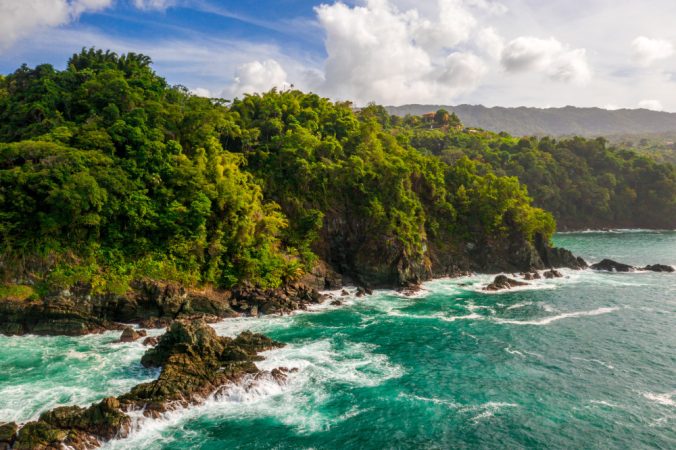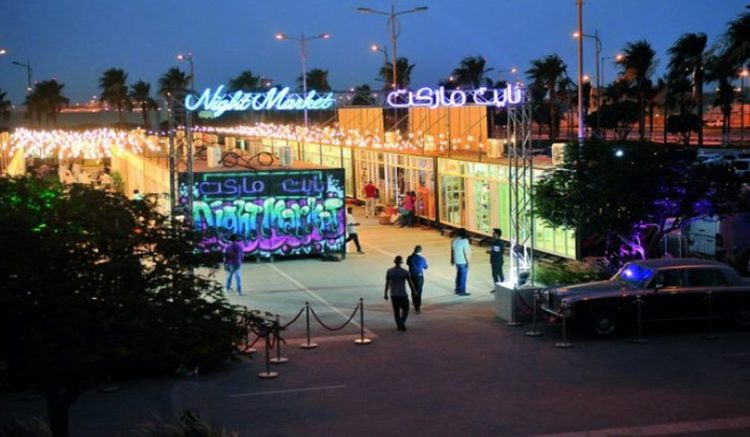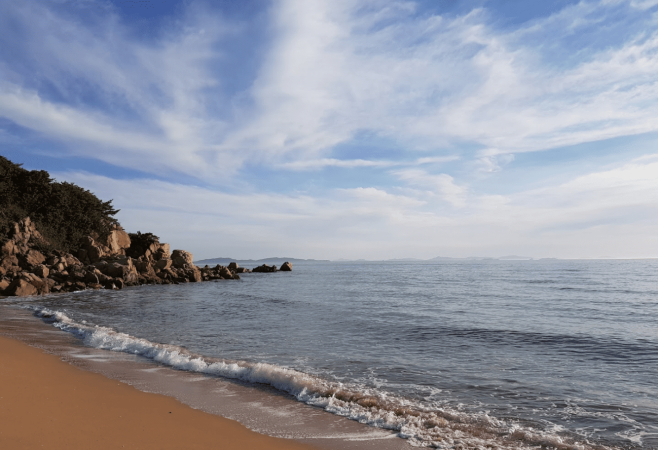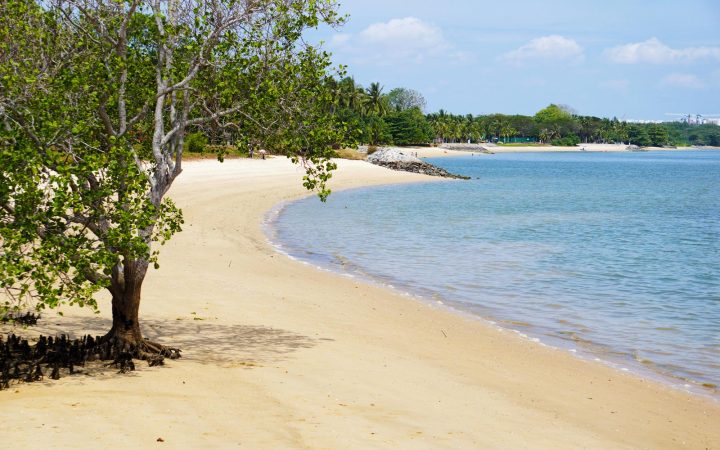
Unveiling the Secrets of Raja Ampat: A Hidden Gem of Southeast Asia. Raja Ampat, located in the heart of Southeast Asia, is a hidden gem that is slowly gaining recognition as one of the world’s top travel destinations. This archipelago in the Indonesian province of West Papua is a marine wonderland that boasts of the highest marine biodiversity in the world. With over 1500 small islands, crystal clear waters and vibrant coral reefs, Raja Ampat is a paradise for divers and snorkelers. But that’s not all, this tropical paradise also has a unique culture, welcoming locals and a commitment to sustainable tourism. In this article, we’ll unveil the secrets of Raja Ampat, explore its biodiversity, culture, attractions, and give practical advice on how to plan your trip to this idyllic destination.
Introduction to Raja Ampat
What is Raja Ampat?
Raja Ampat is a picturesque archipelago located in West Papua, Indonesia. It comprises of more than 1,500 small islands, cays, and shoals, and is home to breathtaking landscapes, pristine beaches, and a plethora of unique marine life.
Why visit Raja Ampat?
Raja Ampat is a dream destination for any traveller looking to get away from the hustle and bustle of city life and immerse themselves in the natural beauty of the world. With its crystal-clear waters, rich marine biodiversity, and unique cultural experiences, Raja Ampat is a true hidden gem of Southeast Asia that is worth visiting at least once in a lifetime.
The Biodiversity of Raja Ampat
Overview of the Marine Life
The waters surrounding Raja Ampat are some of the most diverse in the world, with an astonishing array of marine species that call it home. From manta rays and sea turtles to pygmy seahorses and whale sharks, Raja Ampat offers an unmatched opportunity for snorkellers and divers to explore and discover the underwater world.
The Four Kings of Raja Ampat: Misool, Salawati, Batanta, Waigeo
Raja Ampat is divided into four main islands, also known as the Four Kings. Each of these islands has its own unique charm, offering a distinct cultural experience. Misool is renowned for its labyrinthine limestone caves and vibrant coral reefs, while Salawati offers a chance to discover the rich history and culture of the indigenous people. Batanta is famous for its lush rainforest and waterfalls, and Waigeo is home to some of the best snorkelling and diving sites in the region.
Cultural Experiences in Raja Ampat
Indigenous People of Raja Ampat
The indigenous people of Raja Ampat are known as the Papuans, and they have lived in the area for thousands of years. Visitors to Raja Ampat can learn about their unique culture, which is centered around hunting, fishing, and the production of traditional handicrafts.
Traditional Music and Dance
Traditional music and dance are an essential part of Papuan culture and offer visitors a chance to experience the rhythm and energy of this unique and vibrant community. Whether it’s the traditional dance of the Cendrawasih, or the hypnotic beats of the Tifa drum, there is no shortage of cultural experiences to be had in Raja Ampat.
Best Activities and Attractions in Raja Ampat
Snorkelling and Scuba Diving
Snorkelling and diving are the most popular activities in Raja Ampat, and for good reason. The crystal-clear waters offer unparalleled visibility, and the rich marine life is truly breathtaking. With over 600 species of coral and 1,700 species of fish, Raja Ampat is a paradise for any underwater enthusiast.
Top Dive Sites in Raja Ampat
Some of the most popular dive sites in Raja Ampat include Manta Sandy, which is home to a large population of manta rays, and Blue Magic, which is famous for its schools of barracuda and jacks. Other popular sites include Cape Kri, Melissa’s Garden, and the Arborek Jetty.
Island Hopping and Beaches
Raja Ampat is also home to some of the most stunning beaches in the world. Visitors can explore the islands on foot or by boat, stopping at secluded coves and bays for a refreshing swim. Some of the most popular islands to visit include Wayag, Arborek, and Piaynemo.
Top Islands to Visit in Raja Ampat
Wayag Island is a particular highlight, with its iconic limestone formations and turquoise waters. Arborek Island is famous for its vibrant corals and colourful fish, while Piaynemo provides a stunning panoramic view of the archipelago from its viewpoint.
How to Get to Raja Ampat
Raja Ampat is a hidden gem located in the remote region of West Papua, Indonesia. To get to this paradise, you will need to fly to Sorong, the gateway to Raja Ampat, and then take a boat to the islands.
Arriving by Air
The best way to get to Sorong is by air. There are domestic and international flights to Sorong from major cities in Indonesia, such as Jakarta, Bali, and Makassar. International flights from Singapore and Kuala Lumpur are also available.
How to Get to Sorong
From the Sorong airport, you can take a taxi or shuttle bus to the harbor. The journey takes around 20-30 minutes, depending on the traffic. At the harbor, you can find various boat operators that offer transportation to Raja Ampat.
Domestic and International Flights
Some airlines that serve Sorong include Garuda Indonesia, Lion Air, Sriwijaya Air, Batik Air, and Wings Air. For international flights, AirAsia and SilkAir offer direct flights from Singapore to Sorong.
Arriving by Sea
Alternatively, you can also take a ferry from neighboring islands such as Misool or Waigeo to get to Raja Ampat. However, this option may not be as convenient as flights.
Ferry Services
There are ferry services available from Sorong to Waisai, the capital of Raja Ampat, and other islands. The journey can take up to three hours, depending on the boat and weather conditions.
Where to Stay in Raja Ampat
There are various types of accommodation in Raja Ampat, from resorts and lodges to liveaboards.
Resorts and Lodges
Some popular resorts and lodges in Raja Ampat include Misool Eco Resort, Papua Paradise Eco Resort, and Raja Ampat Dive Lodge. These accommodations provide a comfortable stay with excellent facilities and easy access to the stunning dive sites and natural beauty of Raja Ampat.
Liveaboards
For a unique experience, you can also stay on a liveaboard. These boats offer a more intimate and adventurous way to explore Raja Ampat’s hidden gems. Some popular liveaboard operators are Mermaid Liveaboards, Blue Manta Explorer, and Ondina Liveaboard.
Best Time to Visit Raja Ampat
Raja Ampat can be visited all year round, but some months are more favorable than others.
Weather and Climate
The dry season in Raja Ampat is from October to April, while the rainy season is from May to September. The weather during the dry season is mostly sunny with occasional rain, making it the best time for diving and snorkeling.
Crowd Levels and High Season
The peak season in Raja Ampat is from December to February, with many tourists visiting during this time. If you want to avoid the crowd, it’s best to visit during the shoulder season, which is from September to November and from April to May.
Sustainable Tourism in Raja Ampat
Raja Ampat is a fragile ecosystem with diverse marine life, and it’s essential to practice sustainable tourism to preserve its natural environment and support local communities.
Preserving the Natural Environment
To minimize the impact on the environment, visitors are encouraged to follow responsible tourism practices, such as not littering, not touching or damaging coral reefs, and choosing eco-friendly accommodations and tour operators.
Supporting Local Communities
Tourism can provide local communities with a source of income, and it’s essential to support them to maintain their traditional way of life and preserve their culture. Visitors can support local communities by purchasing local products, participating in cultural experiences, and respecting local customs and traditions.Whether you’re an adventure seeker, a nature lover, or simply seeking a place to unwind, Raja Ampat is a destination that should be on your bucket list. With its pristine natural beauty, diverse marine life, unique culture, and commitment to sustainable tourism, it’s no wonder why Raja Ampat is slowly gaining recognition as one of the top travel destinations in the world. So pack your bags, book your flight, and be prepared to discover the secrets of Raja Ampat.
Frequently Asked Questions (FAQ)
What is the best time to visit Raja Ampat?
The best time to visit Raja Ampat is between October and April when the weather is dry and sunny. However, this is also the peak season, and the islands can get crowded. If you want to avoid the crowds and enjoy lower prices, you can consider visiting during the shoulder season, from May to September. Keep in mind that the weather can be unpredictable during this time, and there may be occasional rain showers.
Do I need a visa to visit Raja Ampat?
Yes, most travelers need a visa to enter Indonesia, including Raja Ampat. You can get a visa on arrival at the airport or apply for an eVisa in advance. Make sure you check the latest visa requirements for your country before you travel.
What is the best way to get to Raja Ampat?
The most common way to get to Raja Ampat is by air. You will need to fly to Sorong, the largest city in West Papua, and then take a ferry or speedboat to the islands. There are regular domestic flights to Sorong from Jakarta, Bali, and other major cities in Indonesia. You can also take an international flight to Singapore or Kuala Lumpur and then take a connecting flight to Sorong.
What is the marine life like in Raja Ampat?
Raja Ampat is known for having the highest marine biodiversity in the world, with over 1,500 species of fish, 700 species of mollusks, and 600 species of coral. Divers and snorkelers can expect to see a range of colorful fish, sharks, rays, sea turtles, and other marine creatures. Make sure you follow responsible diving practices and do not touch or disturb the marine life.
Read More :








